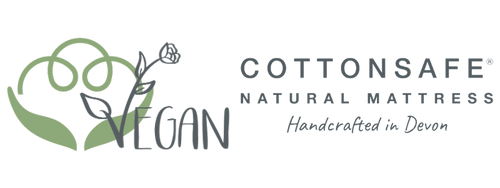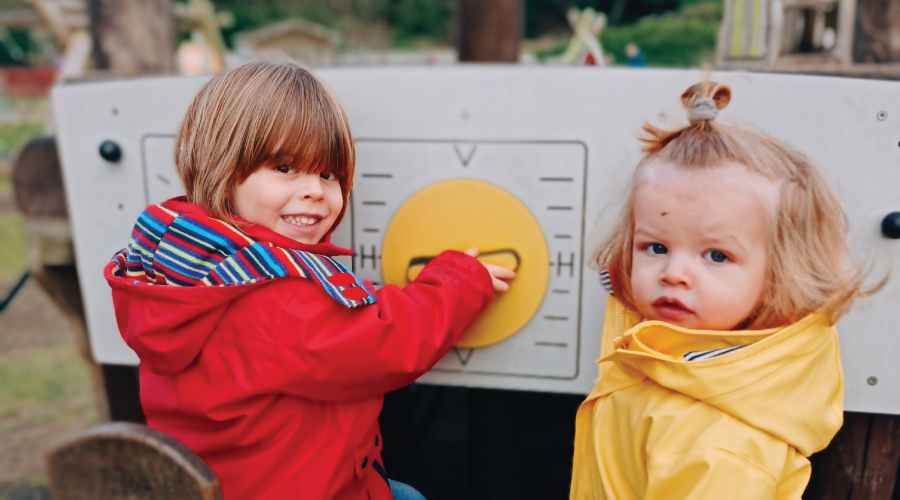Jamie and I have been fortunate enough to become parents twice over in the last 4 years, we have two beautiful boys who run us ragged!
Becoming parents for the first time was a scary path to tread, particularly when making decisions for our first unborn child in the early days.
Safety for any parent is paramount and non-negotiable, new parents are bombarded with information about the best and safest products on the market for their babies, the safest car seat, safest bottles, safest toys, the safest sleeping bags, the safest sleeping positions, and the safest mattress.
So, let’s talk about mattresses for a minute – because it’s what we do – The Lullaby Trust state in their ‘Safer Sleep for Babies Fact Sheet 5 Mattresses, Bedding and Cots’
“The mattress you chose should be firm, flat and have a waterproof layer which can be wiped down and kept clean. This will prevent bacteria from collecting in the foam”
You’ll note, I’ve highlighted “collecting in the foam” – did you know that foam is highly flammable and therefore completely dependent on chemical fire retardants to pass UK regulations.
There are up to 5kg of fire retards in a foam mattress, all of these chemicals have been shown to have negative and adverse effects on human health as well as the environment with the following chemicals in particular being linked to babies and children’s health and development.
Polybrominated Diphenyl Ethers (PBDEs) and PCBs Polychlorinated Biphenyls
These environmentally hazardous Persistent Organic Pollutants or POPs have long term adverse effects on the environment, they are toxic to aquatic life and are harmful to human health. PBDEs and PCBs are known to alter the normal activity of the nervous system, cause thyroid hormone dysregulation, endocrine disruption, cognitive and behavioural difficulties.
Shockingly, studies have shown these chemicals to be found in blood, breastmilk and umbilical cord blood and several studies have shown that children with higher prenatal exposure to PBDEs to have lower IQs as well as links with hyperactivity, slower motor development and poor attention. Children with greater exposure to PCBs have lower birth weights, slowed growth, and poorer performance on tests of brain development.
Hexabromocyclododecane (HBCDD)
This chemical is Persistent, Bio-accumulative and very toxic to the aquatic environment. It has been listed on REACH as a chemical of ‘Very High Concern’.
Found in human breast milk it has been shown to cross the placenta and is associated with decreased cognitive levels in children.
MPP Mix or methyl phenyl phosphate (Mixed Organophosphate)
Not only are Mixed Organophosphates very toxic to aquatic life and harmful when in contact with the skin, they are also suspected of damaging fertility or the unborn child.
Organophosphate flame retardants (OPFS)
These chemicals have been shown to have a negative impact on cognitive function in children, lead to behavioural problems, with less responsible behaviours being present as well as increased aggression, defiance, hyperactivity, inattention, and bullying behaviours.
TPP
TPP has been detected in breast milk and its metabolites have been found in urine, with a U.S. study finding higher exposure among toddlers than their mothers.
TPP has been linked to a number of toxic effects including obesity and hormone disruption
Perfluorocarbons (PFCs): Stain resistant chemicals
Exposure to these compounds has been linked to a number of health concerns including Cancer.
Hormone disruption with Children exposed to greater levels showing reduction in hormone levels and delayed puberty.
A 2012 study of 587 children found those with greater exposure to PFCs had significantly poorer responses to vaccines.
Reduced birth weight - a number of large epidemiological studies have related higher maternal exposure to PFCs to lower birth weight.
Spray Adhesives and solvents including Formaldehyde
Aside from ALS risk or other nervous system consequences, formaldehyde is a respiratory irritant that causes chest pain, shortness of breath, coughing, and nose and throat irritation, according to the ATSDR. It can also cause cancer, and has been linked to an increased risk of asthma and allergies in kids.
So, what are we doing at Cottonsafe® Natural Mattress to reduce our children’s exposure to these horrendous chemicals?
We have perfected a range of handcrafted Children’s, Cot and Cot Bed Mattresses with three primary objectives:
- Meet the product safety requirements
Our Cot and Cot Bed Mattresses pass the relevant safety and fire regulations: BS 7177:2008 + A1:2011. They also conform to the European standard BS EN 16890:2017(8.2.3 and 8.5.2.2)
All our mattresses pass UK Fire Regulation BS7177
- Ensure they contain absolutely no fire-retardant chemicals.
Cottonsafe® uses natural materials to pass the regulations with no added chemicals. Cottonsafe® has the look, versatility and feel of organic cotton with the natural advantages of wool. This makes the Cottonsafe® a natural, completely chemical free alternative to keep your baby and child safe.
Our Vegan Children’s, Cot and Cot Bed Mattress contains absolutely no fire-retardant chemicals, no foams, no animal products and no dangerous residues that can be inhaled or absorbed but it is totally fire safe and meets all the UK fire safety laws.
-
Get a good night’s sleep – you don’t need to tell us how important your baby’s sleep is, because if they’re awake, you are too!
*For more information on the chemicals found in UK Mattresses click here: https://www.cottonsafenaturalmattress.co.uk/blogs/natural-mattresses/which-chemicals-can-be-found-in-uk-mattresses

